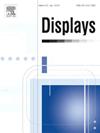Two-stage underwater image enhancement using domain adaptation and interlacing transformer
IF 3.7
2区 工程技术
Q1 COMPUTER SCIENCE, HARDWARE & ARCHITECTURE
引用次数: 0
Abstract
Underwater images typically suffer from quality defects such as impurities, light scattering, absorption, color casts, etc. Various underwater image enhancement (UIE) techniques based on deep learning have recently been proposed and have achieved remarkable results, but they still have qualitative difficulty from irregular color channel loss. This problem is usually caused by the difficulty of distinguishing between the color cast of the underwater and the irregular scattering of the object. In this work, we propose a two-stage approach to refine domain information and semantic information, respectively: domain adaptation network and image enhancement network. In the domain adaptation network, we introduce Sobel sparse attention, which can separate the semantic information of underwater images and remove domain information. A U-shape architecture of the transformer is designed for efficient decoding of the image enhancement network. In addition, the interlacing position embedding is adopted, which can solve the scattering and blurring of light that occurs locally. To validate our proposed method, we conducted various experiments using non-reference, full-reference, and synthetic underwater images. The experimental results demonstrate that our method outperforms the state-of-the-art qualitatively and quantitatively.
求助全文
约1分钟内获得全文
求助全文
来源期刊

Displays
工程技术-工程:电子与电气
CiteScore
4.60
自引率
25.60%
发文量
138
审稿时长
92 days
期刊介绍:
Displays is the international journal covering the research and development of display technology, its effective presentation and perception of information, and applications and systems including display-human interface.
Technical papers on practical developments in Displays technology provide an effective channel to promote greater understanding and cross-fertilization across the diverse disciplines of the Displays community. Original research papers solving ergonomics issues at the display-human interface advance effective presentation of information. Tutorial papers covering fundamentals intended for display technologies and human factor engineers new to the field will also occasionally featured.
 求助内容:
求助内容: 应助结果提醒方式:
应助结果提醒方式:


